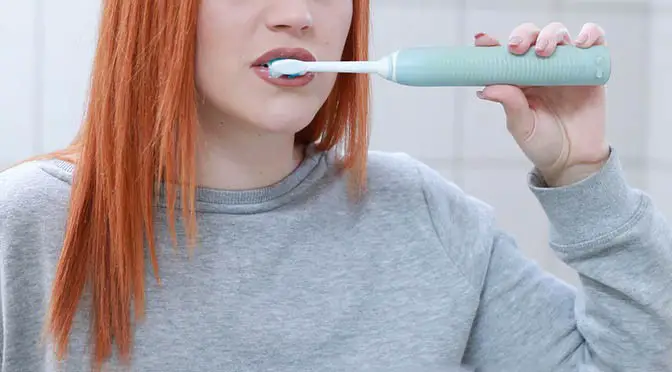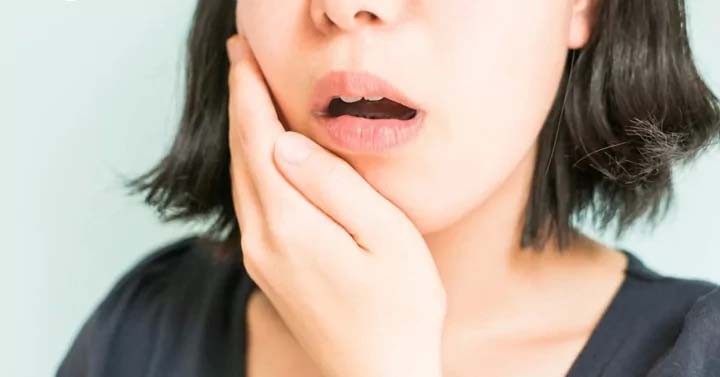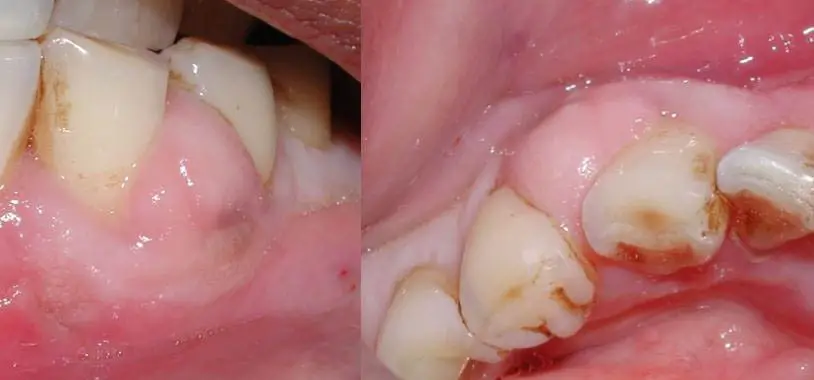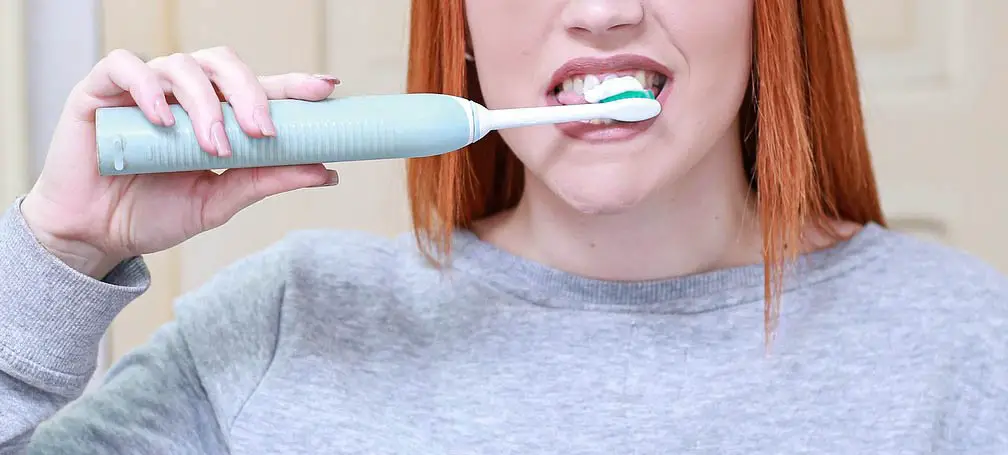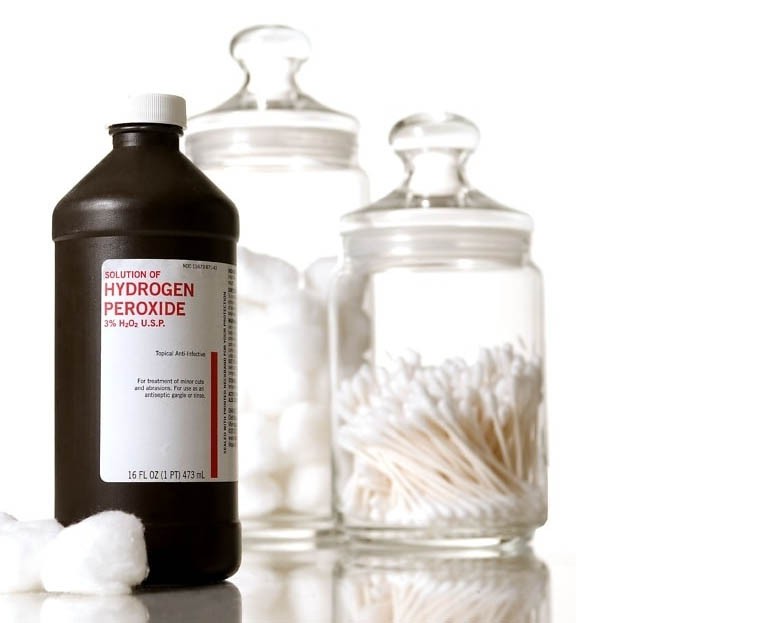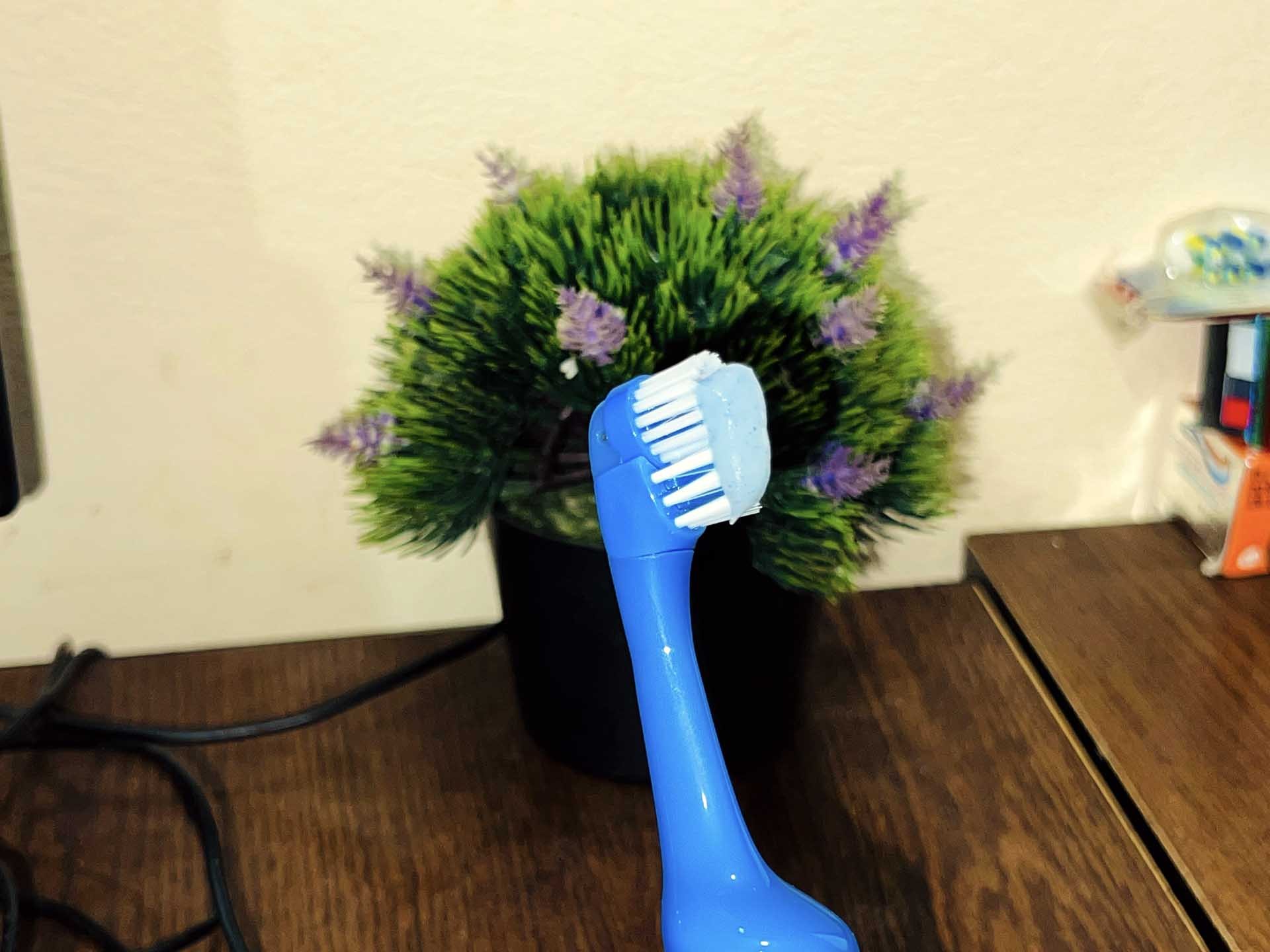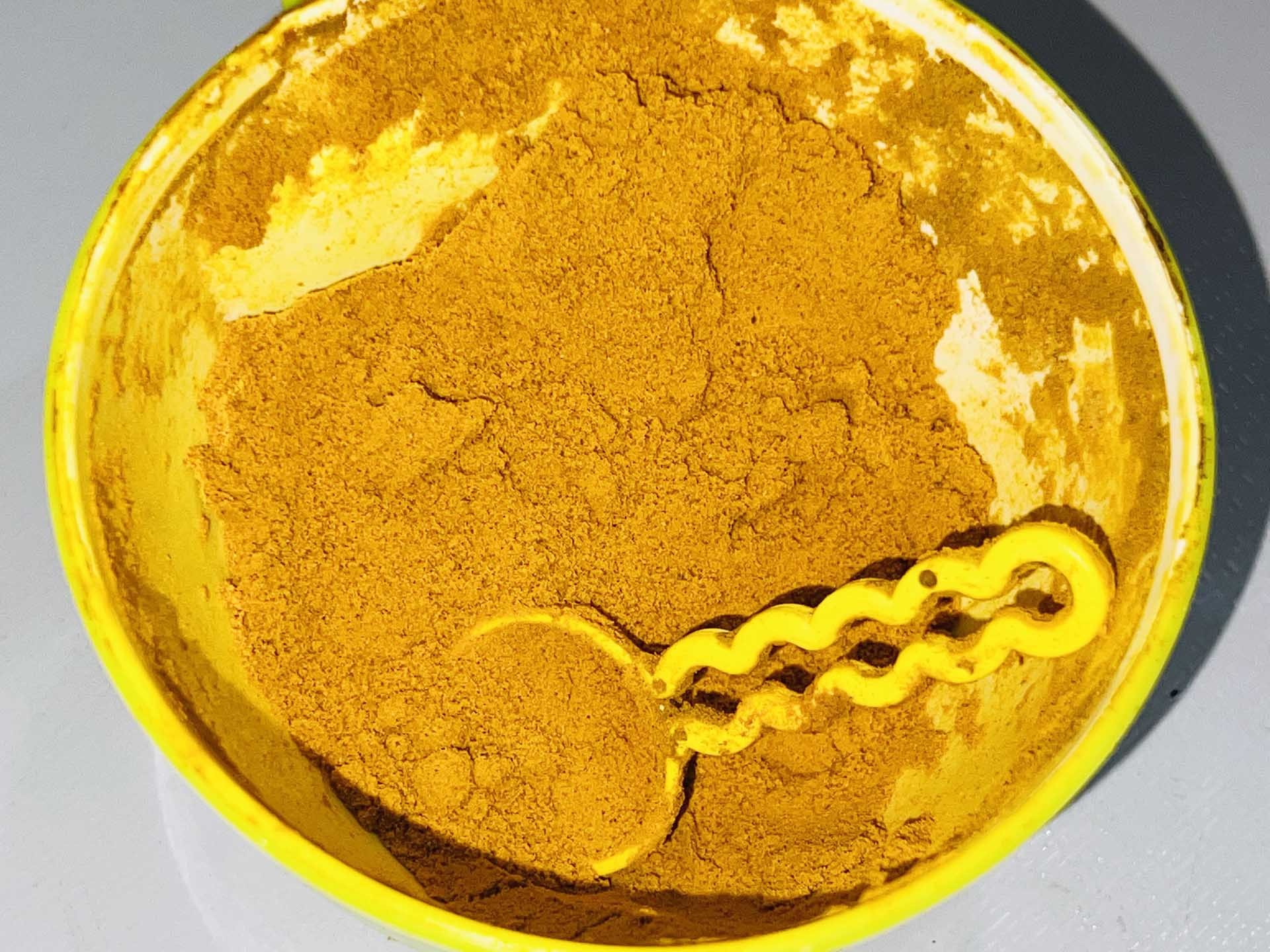Tooth pain is never a pleasant experience, whether a sudden jolt of discomfort or a persistent ache that won’t go away. If you’ve recently started using an electric toothbrush, you might wonder if there’s a connection.
Today, I’ll explore the possible causes of tooth pain after using an electric toothbrush, potential solutions, and everything in between. So, if you’ve been experiencing tooth pain and are curious if your electric toothbrush could be the culprit, keep reading.
How To Recognize Dental Sensitivity And Tooth Pain?
Sometimes we may perceive tooth sensitivity as tooth pain. But these two are different things. Here is what you need to know about tooth sensitivity and toothache:
Dental sensitivity and tooth pains can both cause discomfort in or around the teeth, but they can feel slightly different.
- Tooth Pain
Tooth pain is often described as a severe, throbbing pain that can vary in intensity. While some people may experience brief episodes of pain triggered by hot or cold food and beverages, others may have persistent tooth pain daily. It can be challenging to pinpoint which tooth is causing the pain, as the surrounding area may also ache.
- Dental Sensitivity
On the other hand, dental sensitivity is typically a chronic issue that may worsen over time. It commonly occurs due to receding gums or enamel wear and tear. When the enamel erodes, and the softer dentin layer becomes exposed, certain stimuli like hot or cold foods can cause a sharp, acute discomfort.
It’s worth noting that toothaches can be either temporary or chronic, while dental sensitivity is often a chronic condition.
Tooth Pain Stages And Recognition
Now that you know the differences between tooth pain and tooth sensitivity, let’s talk about the stages of tooth pain. The stages of tooth pain can vary depending on the cause and severity of the issue. Here is a breakdown of the stages and how to recognize them:
Sensitivity To Hot Or Cold
The initial stage often involves sensitivity to hot or cold temperatures. You may experience a brief, sharp pain when consuming hot drinks or cold foods.
This sensitivity suggests that your tooth enamel may be worn down or your gums are receding, exposing nerve endings.
Mild Discomfort
The second stage typically involves mild discomfort. You may feel a dull ache or pulsating sensation around the affected tooth. The pain may come and go, and you may also experience sensitivity to pressure or biting.
Intensifying Pain
The third stage involves intensifying pain. You may experience a sharp, shooting pain that radiates to nearby areas like the jaw or ear. The pain can be constant or triggered by certain stimuli such as hot or cold foods, sweets, or chewing.
Intense pain often suggests nerve damage or pulpal inflammation, requiring immediate dental care to prevent further complications.
Abscess Formation
The final stage is abscess formation. An abscess is a pus-filled sac that develops within the tooth or gums due to untreated infection. It can cause intense pain, a foul mouth taste, and difficulty opening the mouth.
Abscesses are serious and can lead to life-threatening conditions if the infection spreads to the bloodstream. Urgent dental attention is necessary if an abscess is suspected.
7 Common Causes Of Tooth Pain After Using Electric Toothbrush
So, the main cause of tooth pain is the pulp involvement and dental caries. But why is your tooth painful after using an electric toothbrush? If you’re experiencing tooth pain after using an electric toothbrush, it could be due to a variety of reasons:
1. Improper Brushing Technique
Over time, improper brushing techniques or excessive pressure can lead to the recession of gum tissue, exposing the sensitive roots of your teeth. When exposed, the roots become more susceptible to pain and sensitivity.
This is especially when exposed to the rapid movements generated by an electric toothbrush. If you suspect gum recession, it is important to consult with your dentist to determine the appropriate treatment and prevent further complications.
2. Tooth Sensitivity
Tooth sensitivity can also contribute to pain after using an electric toothbrush. Sensitivity occurs when the protective enamel layer of your teeth becomes worn down or damaged, exposing the nerve endings within your teeth.
The vibrations or rotations of an electric toothbrush can trigger these nerve endings, causing discomfort and pain. This is one of the major disadvantages of an electric toothbrush. You can try using toothpaste which is specifically created for sensitive teeth and a soft-bristled toothbrush to temporarily alleviate this issue.
3. Hard Bristles
Electric toothbrushes with hard bristles can be abrasive to your tooth enamel, leading to tooth sensitivity and discomfort.
Opting for soft or extra-soft bristles toothbrushes is recommended to protect your enamel and gums. These bristles effectively remove plaque and debris without causing unnecessary damage to your teeth.
4. Brush Settings
Some electric toothbrushes offer various settings, including harsh or high-speed options. While these settings may provide a thorough cleaning, they also have a higher risk of causing tooth discomfort.
If you’re experiencing tooth pain after using an electric toothbrush, consider adjusting the settings to a lower intensity. Also, you may try switching to a toothbrush with gentler brushing modes to reduce the risk of dental discomfort.
5. Brushing Duration
It’s essential to maintain good oral hygiene, right? But too much brushing can actually irritate your gums and teeth, resulting in dental discomfort. Over Brushing can lead to gum recession, enamel erosion, and tooth sensitivity.
So, it’s recommended to brush your teeth for two minutes twice a day (After breakfast and Before sleep after dinner), using a gentle technique to avoid excessive wear and tear on your teeth and gums.
6. First-Time Use
If you recently switched from a manual toothbrush to an electric toothbrush, your teeth, and gums may need some time to adjust. The switch in brushing technique and the increased efficiency of an electric toothbrush can initially cause some discomfort.
However, with time, your teeth and gums should adapt to the new brushing method, and any initial discomfort should subside.
7. Current Dental Conditions
In some cases, tooth pain after using an electric toothbrush may not be directly related to the brushing itself but rather an underlying dental issue that coincidentally occurred around the same time.
If you already have dental conditions like cavities, cracks in your teeth, or gum disease, the use of an electric toothbrush might exacerbate the sensitivity and cause pain. If your tooth pain persists or worsens, it is crucial to consult with your dentist for a thorough examination and appropriate treatment.
8 Simple Ways To Ease Tooth Pain Caused By An Electric Toothbrush
Dealing with tooth pain after using an electric toothbrush can be frustrating and uncomfortable. While it’s crucial to consult a dentist for proper diagnosis and treatment, several effective home remedies can help alleviate tooth pain and discomfort. Here are some remedies to relieve tooth pain after using an electric toothbrush:
1. Rinse With Warm Salt Water
A simple yet effective home remedy involves rinsing your mouth with warm saltwater. Saltwater naturally possesses antibacterial and analgesic properties that can reduce inflammation and eliminate bacteria in the mouth.
Mix half a teaspoon of salt in a glass of warm water, swish it around your mouth for 30 seconds, and then spit it out. Repeat this process multiple times a day to relieve tooth pain.
2. Apply A Cold Compress To Reduce Inflammation
Another helpful remedy is using a cold compress for reducing the inflammation and numb the pain. The cold temperature helps constrict blood vessels and minimize swelling.
To use this remedy, place a cold pack or a cloth-wrapped bag of ice on your cheek, near the painful tooth, for 15 minutes at a time. Remember to take breaks between applications to protect your skin.
3. Hydrogen Peroxide
Hydrogen peroxide has moderate antiseptic and disinfectant properties, making it useful for sterilizing cuts, burns, and other wounds for preventing infection. You can also rinse your mouth with peroxide to treat gum disease and reduce inflammation.
To make a mouthwash with hydrogen peroxide, add 2 caps of 3% strength hydrogen peroxide to the same parts of warm water. Now, swish the solution around in the mouth for up to 30 seconds, then spit the solution out. Rinse your mouth with water afterward to remove any residue.
4. Warm Water And Honey
According to the National Institutes of Health, honey has antibacterial properties and can be used to treat wounds. It may help reduce pain, swelling, and inflammation while speeding up healing.
To ease discomfort from sensitive teeth, rinse your mouth with lukewarm water and a tablespoon of honey. This mouthwash will aid in dental healing.
5. Use Desensitizing Toothpaste Or Gels
Tooth sensitivity and pain caused by an electric toothbrush can be temporarily relieved by using desensitizing toothpaste or gels. These products work by blocking the nerve endings in your teeth, reducing their sensitivity to hot, cold, or acidic foods and drinks.
Look for toothpaste or gels specifically designed for sensitive teeth. Also, follow the instructions on the packaging for the best results.
6. Green Tea
This tea is known for its various health benefits due to its anti-inflammatory and antioxidant properties. It has been used in cardiovascular health and cancer prevention research and may also benefit dental health.
If you have sensitive teeth, you can use unsweetened green tea as a mouthwash twice daily to strengthen teeth and reduce swelling.
7. Turmeric
Turmeric is more than just a cooking ingredient – it also has medicinal uses due to its anti-inflammatory properties. Curcumin in turmeric has been used in Ayurvedic treatments, digestive disorder remedies, and as a substance to speed up wound healing.
To improve dental health and relieve discomfort from sensitive teeth, you can massage ground turmeric onto your teeth. You can also make a topical paste with 1 teaspoon each of turmeric, salt, and mustard oil. Apply this paste to your gums and teeth twice daily to relieve discomfort.
8. Avoid Acidic Or Hard Foods That Can Worsen Tooth Sensitivity
While utilizing home remedies, avoiding foods that can exacerbate tooth sensitivity is essential. Acidic foods such as citrus fruits, tomatoes, and vinegar can cause tooth pain and discomfort.
Similarly, hard foods like ice, nuts, and hard candies can irritate sensitive teeth. Opting for soft, non-acidic foods is recommended until tooth pain subsides.
Remember, these remedies provide temporary relief, and it’s crucial to consult a dentist for a thorough assessment and proper treatment of your tooth pain.
So, When To Seek Professional Help?
While home remedies and tips can help you relieve minor tooth pain, they are not substitutes for professional dental care. Hence, you should go to your dentist ASAP if you experience any of the following symptoms:
- Persistent or worsening tooth pain that lasts longer than two days
- Signs of dental damage (e.g., chipped or cracked teeth)
- Bleeding or swollen gums
- Fever, headache, or earache
- Difficulty chewing, swallowing, or speaking
FAQs
After reading till now, you already know that there are many reasons for tooth pain after using an electric toothbrush. However, if you want to know more, the following questions might aid you:
Can Electric Toothbrushes Hurt Gums?
Both electric and manual toothbrushes can hurt your gums if you brush them improperly. Brushing too hard can also hurt your gums.
Do Electric Toothbrushes Damage Fillings?
Electric toothbrushes are generally safe to use with dental fillings. However, it is important to use proper technique and brush head and to avoid using excessive pressure while brushing. It is also a good idea to consult with your dentist for personalized brushing practices.
Is Tooth Sensitivity Serious?
Tooth sensitivity, or “dentin hypersensitivity,” is discomfort or pain in the teeth as a response to certain stimuli, such as hot or cold temperatures. It may be a temporary or chronic problem and can affect one tooth, several teeth, or all the teeth in a single individual.
Hot sensitivity can be a poor indication since it might indicate that the nerve within the tooth is beginning to degenerate. Tooth sensitivity can also be an early warning sign of more serious dental problems.
Conclusion
Many reasons can cause tooth pain after using an electric toothbrush. However, there are solutions to alleviate this discomfort. Always use gentle pressure and let the electric toothbrush do the work.
Replace the brush head regularly to maintain its effectiveness. Also, consider using a toothbrush specifically designed for sensitive teeth if you have sensitive teeth. Finally, consult with your dentist for further guidance.
Also Read:-Do Sonicare Toothbrushes Wear Out?

